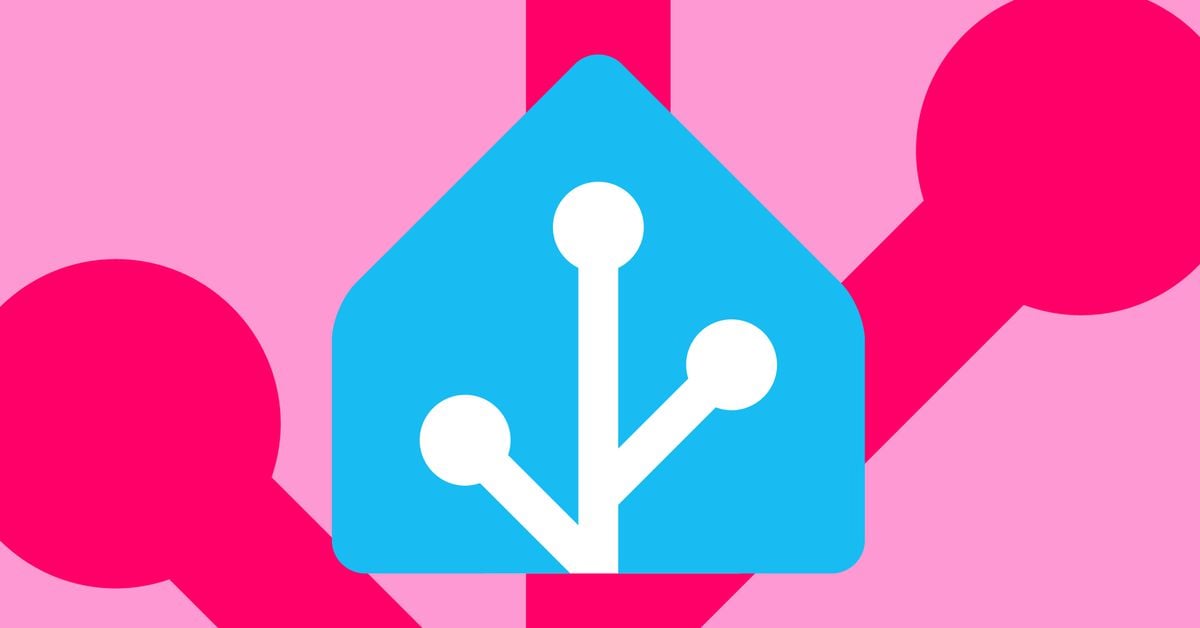- Home Assistant is now part of the Open Home Foundation, a non-profit aiming to fight against surveillance capitalism and offer privacy, choice, and sustainability.
- The foundation will own and govern all Home Assistant entities, including the cloud, and has plans for new hardware and AI integration.
- Home Assistant aims to become a mainstream smart home option with a focus on privacy and user control, while also expanding partnerships and certifications.
Is HA not already the mainstream option for privacy and user control? Maybe I just live in a bubble, but it seems like it’s already the go-to if you care about those things.
I took it to mean they’re going to put it in prettier packaging, simplifying its use for the average Joe.
I have been using it for years and still find some things confusing. Like idk why it’s so hard to figure out how to customize the dashboard and create new widgets for it. I’ve been a professional web dev for 8 years and if I’m struggling with it, you can bet most people aren’t even going to bother. Idk what’s so hard about providing simple html, css, and js like every other web framework.
Because it’s either full-auto, or full-manual, with no wiggle room in between. That being said, they have made the right moves in hiring the right people in the community to be ICs on the project to fix stuff like this, and they are killing it. Ex: they hired the Rhasspy dev a year ago, and he has already revamped the entire voice assist workflow in HA. Great work.
yeah nothing ever makes me feel stupider than my home assistant, which half-works for random reasons, even though like, I can actually develop things. Woe unto anyone wading into that without any coding background/inclination or interest. I hadn’t really ever encountered YAML before working with HA (I’ve been using HA now for like 6 or 7 years I just realized).
I’ve been running HA for two years and barely understand YAML, let alone the main YAML config, which is keeping me from accomplishing a few things I want to do, like taking better control of my air filter.
I have a lengthy coding background, back to the days when it was common for spacing and line length and line endings to be significant to the code. Maturing out of that was one of the major advances in programming! I can’t comprehend people bringing that back: a pox on yaml, and python, and similar, for bringing back the nightmares
I love my HA dashboard but it took seemingly far too much effort to get it sensible. I had to know how to ssh in and edit a locked YAML file and create new template sensors just so I could have some temperature sensors show as “50” instead of “50.0028472” or some shit.
I think they fixed that in an update though. But there’s always something that requires multiple extra layers of digging around.
Recently had to manually reinstall HA then restore from a backup manually because there was no GUI option. As software, HA is great, as a product usable by laypeople it still needs work
I’m totally cool with that. Even as a more technically-minded user, I see a lot of things that could be way more streamlined.
I totally agree! They’ve come a long way, but making it easier to use can only help grow support for the project.
Yeah I’m not using it yet, partly because I’m not at the home server level of Linux competency, but I do want to move towards it at some point
If you want to skip ahead, there are also a few ways to get Home Assistant running that don’t need any level of Linux competency:
- They sell their own devices that are more or less plug & play.
- Installing Home Assistant OS on a Raspberry Pi is just flashing the image onto an SD card.
- Installing Home Assistant OS onto a dedicated device involves shortly booting into Linux from USB to flash Home Assistant OS onto the internal disk.
If you don’t want to run Home Assistant OS, and instead want to run Home Assistant as one of several applications running on a Server, that’s when you need to start getting comfortable administrating a Linux server.
I didn’t realize their devices are plug and play. I’ve considered one before and probably will go that route if it’s that easy when the wife and I have more than a pair of light bulbs to control
Just do it. Quick and easy, and not that complex. Even if you only have a couple of light bulbs, now you can schedule them, automate them, integrate them with any voice assistant you may use
You may find you already have a lot more than just a pair of lightbulbs. Mine sees my router and stats, printer status, TV, speakers, thermostats, my phone, among things I got before HA
For me, I crossed the threshold when I decided to treat it as an appliance (Raspberry Pi 4) rather than one more thing that depended on me setting up a lab. I still haven’t made progress in the lab, but HA just works
Well you have successfully doomed me to a day of attempting to deal with the same dang server error.
And here I thought that this might be a nice way to set up a few things my wife would like
If you want the awesomeness of self-hosting with somewhat less drama, give unraid a look-see! Although if you are looking to just host HA and not have a full media center and other stuff, it could be overkill.
My attempts at self hosting have been mostly an attempt to set up jellyfin, *arr, and foundryvtt on an old computer at which point I realized I don’t really understand terminal or networks. I’m getting a bit more comfortable with my terminal in my desktop, but I’m going at a reasonable pace nowadays. I don’t have a ton of time or money to sink into it
For technical people… Yes.
For people who aren’t that technical? No.
Don’t get me wrong, the Home Assistant Green and SkyConnect dongle is great and massively makes maintenance for the regular joe easier (no pis or other hardware that loads from the SD/hardware considerations).
But some stuff in UX would have to improve, which it already is doing ofcourse.
You would need to make touching a config file non existent. They’ve improved this over time, but not quite there I imagine.
It’s especially true when it comes to things like HACS. I love HA but I’ve also told everyone I know that, if I die, rip all that shit out and replace all the “smart” stuff with regular stuff.
Or …… I choose stuff that work’s normally, with “smart” being an addition.
- Smart thermostat works exactly like a dumb one, if you’re not online and there’s nothing programmed.
- Smart switches work exactly as a dumb one, if there’s no automation saying otherwise.
- Alexa works exactly like Alexa, if there’s no integration with HA.
- Flood sensors do beep, even if nothing is integrated to notify your phone
You’re not wrong and, to be fair, I’m mostly exaggerating when I say to rip out all the smart stuff.
Thermostat would stay, Alexa is being phased out but google home would stay, flood sensors I have at this time do not beep because of the stress is causes the pets just during normal testing, but those could be easily replaced.
However, I also have a ton of lighting, zigbee sensors, zigbee smart plugs, camera motion automations, alarm system automations, garage door automations, and other routines that can’t just be taken over by someone that has no desire to mess with HA. It’s not always about the functionality of the device itself, but what HA does to enhance it.
While I know I was claiming the opposite, it is actually an anxiety by of mine.
In my first townhouse I had wired in speakers, and network/cable/phone everywhere. There was a really nice structured wiring box tying it all together. It was beautiful.
When I sold, the realtor made me leave my speakers, my router, my switches, because she claimed it was part of the house and no one could use the wiring without it. What a load of BS that was, but when a home sale is on the line, no point in swearing the small stuff. After I factory reset things, what good does it do them over buying their own, wither own account, and a user manual?
Mine as well, i have a closet with a half rack with all my networking gear, NAS, UPS, proxmox server, etc. If I’m gone, it’s time for whoever lives here to just get a combined router/modem from the ISP and call it a day.
“can’t use the wiring” So in the old days they made people leave all their phones connected when they moved right? /s
As a technical person working in tech, I’ve heard of home assistant but only ever spoken to one or maybe two people that have actually tried it. It doesn’t seem that mainstream. Meanwhile, every smartphone has a proprietary assistant built in.
The assistant in your phone is not the same as home assistant.
Home assistant is mostly used to group all your smart home stuff and create automations.
Being a technical person myself, most people I know want to try it but don’t have the use for it due to living in appartments.
I run it in a docker container and it works great.
For others, beware that in a docker, each plugin needs its own docker container.
I run everything in docker except for HA which I run in a VM (HaOS) which makes it super easy to use.
Edit: by plugins I meant add-ons
Yeah. I ran it in docker for years and it was such a hassle compared to HAOS. The switch to VM was best decision I made regarding HA.
That’s not true at all.
I think the wording is off.
Many or most add-ons need their own docker containers, that is what the add-ons are.
Every integration does not need its own docker container.
Well, the thing is, you don’t need add ons when running in Docker.
There are a few add-ons that are very handy that don’t have a docker equivalent. Namely the google cloud backup.
I also agree that you generally don’t need add-ons and hopefully if someone is running HA on docker, they don’t need them, but for a few select ones, it is “needed”
deleted by creator
each plugin needs its own docker container.
What are you talking about? This is simply not true.
No it’s true. I run ha in a docker container too, and it doesn’t support the plugin supervisor at all. You have to spin up your own plugin containers manually and configure the connection to them in the core ha instance, that’s what I did with piper/wyoming. I’d be happy to share a compose file if someone wants it.
With plugins you mean add-ons like Z2M, Mosquitto or VSCode Server, right?
Correct, yes, the word I meant is addon, not plugin.
You don’t need a supervisor with docker. And you don’t need separate containers for plugins.
If you’re running HA in a docker, you need to run additional containers for add-ons. This is called out in the docs. Add-ons are only for HA OS or if you install it natively, with the supervisor (HA Supervised).
If you are willing to dedicate a device to just HA you don’t need separate containers for the add-ons. For ease of use that makes a lot of sense, it’s, pretty plug and play.
Personally the Pi I’m running it on can handle a lot more than just HA so a docker makes more sense, and just have the add-ons I’m using also defined in the docker compose file.
So, add-ons, not plugins. You don’t need add-ons if you are not using HA OS, they’re irrelevant.
I’d be interested to see that file if you’re still willing. IMO separating everything into their own containers is a positive.
This is how I have mine set up:
homeassistant: image: ghcr.io/home-assistant/home-assistant:stable container_name: homeassistant volumes: - /data/homeassistant:/config - /etc/localtime:/etc/localtime:ro - /run/dbus:/run/dbus:ro ports: - “127.0.0.1:8123:8123/tcp” - “127.0.0.1:1400:1400/tcp” restart: “unless-stopped” privileged: true network_mode: host
ha-whisper: image: docker.io/rhasspy/wyoming-whisper:latest container_name: “ha-whisper” volumes: - /data/homeassistant/addons/whisper:/data command: --model base --language en --beam-size 2 restart: “unless-stopped” networks: default: ipv4_address: 172.18.0.101
ha-piper: image: docker.io/rhasspy/wyoming-piper:latest container_name: “ha-piper” volumes: - /data/homeassistant/addons/piper:/data command: --voice en_US-lessac-medium restart: “unless-stopped” networks: default: ipv4_address: 172.18.0.102
To become mainstream the install process for a fully featured setup needs massive work.
You can buy preinstalled hardware like the Home Assistant Green if you aren’t up for it. I don’t think you can really make it much simpler without just selling the hub itself.
I’m still confused by the different versions of HA. Does that version include all of the features? Or is it the basic install that’s easiest to install?
Yes home assistant green comes preinstalled with everything you need, you can use addons, etc. Just buy it, plug it in and start going. There aren’t really “basic” and “advanced” versions of HA. There’s just some that have addons and others where you do the addons yourself as docker containers. But all of them have the same HA features.
deleted by creator
In what way? It’s dirt simple to get started.
For you maybe. You think your grandma could set up home assistant?
It’d be tough, but I guess we could dig her up and try?
Yeah, that’s all Alexa and Google have on home assistant. Not to mention that sometimes you have to write yaml to create automations.
That doesn’t feel like a fair comparison. For the same level of setup you can get with Alexa and Google, I feel like it’s the same level of difficulty. If you want complex automations, sure you can yaml, but you’ll be doing things you couldn’t with Alexa or Google.
This is assuming you’re starting with a yellow kit or something already set up and yeah, it’s basically just as easy.
Yeah, that’s all Alexa and Google have on home assistant.
That seems like a massive thing though. If the average Joe can’t even install the product, then it doesn’t matter if it has way more features than its competitors.
If average joe can’t be assed to to some research, the product isn’t for average joe and that’s a good thing. Because designing a product for average joe has a lot of drawbacks.
You think my grandma fucks with Google Home or Apple Homekit?
Not everyone is up to the task anyway.
I’ve recently switched to the VM instead of the docker, the setup is so easy if you fail at that you shouldn’t be doing anything with it to begin with.
You can buy pre-installed devices which are essentially plug-and-play
It’s a rhetorical question, you’re missing the entire rhetoric of it…
Which is that not everyone is technically inclined, actually most aren’t, so the majority of everyone is not going to be capable of operating a technically demanding system.
I do understand what you’re saying, but not everyone will or should self host.
I don’t know when you’ve tried the setup, but it’s gotten to a point where i do find it very easy.
If you go the way with a pre built device too, all you have to do is creating an account and plenty device pop up immediately without any further steps.
The new step by step automation creation was all which was left to improve.
If you fail at that, you probably fail at other solutions too
How are skills issue the fault of an open source project that follows open source paradigms and works like every other piece of open source software?
Why do we care? I sure as fuck don’t and I contribute to a lot of FOSS projects.
I like the idea of Home Assistant. I just can’t be arsed to set it up.
I was of the same mindset for a long time; SmartThings, Hue and Google Home all worked well enough together to do what I wanted. But holy shit, Home Assistant is on another level and I only wish I’d installed it sooner.
The only real downside is that it makes home automation somewhat addictive and, by extension, expensive. I spend quite a lot of my time thinking about how to automate more of the things, and have a never ending list of stuff that I want to add to my setup.
Oh it’s not as bad as your making it. My water sensors were only about $20 - $30 shipped and I mean if you’re going to make an order you might as well get that $30 z wave extender so the fence gate sensors I spent $40 on have good coverage. I pair those with about $100 in temperature and humidity sensors for the attic, garage and freezers. I mean I needed to justify the SDR I picked up for like $45 you know. My $20 garage opener has also made life that much simpler. Wait how much have I spent already?
I can quit any time, I swear!
Addictive is right. I’m in the process of building myself a smart mailbox with a couple proximity sensors and an ESP32. It’s been quite the undertaking, and quite expensive if you count the tools I bought for the project.
Yeah, Well, everybody’s day only has 24 hours, need to pick the battles, right.
I finally did and it runs everything, from my lights to my energy and heating management. Worth the saved money, literally.
By any chance are you using Matter in your home? If so, does HA handle that well?
I was too early for that, it’s mostly Shelly, Modbus TCP and EnOcean here, plus some custom API via Ethernet. So, sorry, no experience with Matter, but I’m watching it.
Matter devices are so few and far between that you probably won’t find anyone really making use of it yet as it is mostly promises of firmware updates and future products.
Matter doesn’t yet matter, but HA really Matters
One of the great features about HA is the flexibility to handle just about anything. I really don’t have any Matter devices, except Apple specific, but those are very gradually appearing. I have both Zigbee and z-wave meshes for local control, but can easily add a Thread radio (or my Zigbee one can supposedly be re-flashed). The foundations are mostly there, the flexibility and integrations are there: we just need the standard to mature and the devices to appear, but HA is a great start
It does super matter
Matter very much seems to be the “there are 14 competing standards” joke personified.
Matter’s biggest problem is that it launched behind everything else. You’re already starting to see a lot of support for it just because it allows companies to support Apple Home without implementing the whole HomeKit stack & pay the licensing fees to Apple. SwitchBot, Hue and IKEA already have Matter support in their hubs in beta.
But it won’t be relevant to non-Apple users until Thread radios start being more pervasive and the spec reaches v2 and supports more stuff. Then most devices will be Matter, because a company can support all 3 major vendor apps with one standard. Right now it’s:
- Amazon/Google - most low end devices or devices made by those companies
- Apple Home - devices specifically for homekit
- Amazon/Google/Apple Home - devices for all 3
- Amazon/Google/Matter - devices for all 3 that use Matter to support Apple Home
Some will still go those routes, but eventually it will just make sense to support Matter and do away with all of those separate devices and support paths.
I think the analogy is faulty because none of what exists is any sort of standard. It’s just a bunch of proprietary vendor implementations. Matter is the first front end Smart Home standard.
If you’re down on the “editing YAML until you’re blue in the face” part, they’ve pretty much transitioned entirely to a good UI for that. Going into the yaml is rare now. I was of the same opinion a year or so ago, but tried it and it’s improved immensely in the last year for configuring things. There’s room left for improvement, but it’s usable now.
The first time I did it, it was a shitshow. Then I started over and it worked fantastically. YMMV
Can’t wait to ditch Google Home. Nothing to do with their warmongering. Just hate that the assistant is such a dumb bitch.
Thankfully someone is going to make a localish smart speaker.
The hardware still looks so great, but responsiveness has gone to the shitter in recent years.
I’ve dabbled a little with it, but I really want something that’s as easy to use & set up as the commercial offerings like Google Home and Amazon Echo. I want to have an interface where I can connect my light bulbs, and have little hockey pucks that will listen for a wake word and do what I ask of it, and play my music. I also want to be able to get under the covers and do something that solves an odd problem that might come up.
I’m very hopeful for the project and I do think it will get there eventually.
Ease of setup in exchange for google/amazon spies in your house and your data. Seems like a very bad deal to me.
It’s really not that hard to setup for a basic setup and after that it’s working problem free with all kinds of manufacturers devices, not just one brand.
“Ease of setup in exchange…” I think people tend to forget what “ease” is for others. This is nothing against you as I agree with your statement but I work a job where doctors can’t figure out how to even unplug a keyboard.
We tend to associate just being on a social media platform and typing on a computer with tech literacy. Not saying you did this just using it as an example. I think ease comes with more than just setup it comes with dealing or having patience with that setup.
We use Home Assistant in our house but I also have Google Assistant and even with Home Assistant I still find there are many more things to troubleshoot that Google Assistant just doesn’t give me problems with.
For example it updated and our Camera just stopped being viewable outright and the time and money it actually took to fix that and yes I said money because it had to do with our camera hardware and upgrade on Internet service. So not directly Home Assistant but indirectly to fix it we had to buy another camera. Where Google Assistant just works.
I don’t see anything wrong with the users statement either. All kinds of FOSS apps and services offer ease of use setup and platforms. I am not sure Why Home Assistant couldn’t be set up to do some easy to add integration as well or offer competing products against things like Google Assistant aside from cost and not being a hardware company.
If the idea is to be inclusive the being easy as an exchange is a reasonable request from an end user. We also forget people don’t have the hardware or time to learn to self host. Some of us have day to day jobs that don’t involve this kind of understanding as well as kids, etc. Ease of use as an exchange is why many platforms the Lemmy community doesn’t understand are so popular and maybe open source platforms should adopt that mentality somewhat to bring more people in.
You can live in both worlds and want the other world to give you something another world might. However, don’t get me wrong I don’t disagree with you. Home Assistant isn’t terribly difficult to learn but if I were to hand it to my parents I would be doing it for them. There is also a laziness to be said that can be attributed to people not wanting to learn to set up something like this but I don’t believe that to be the same as entitlement as a consumer is entitled to want more from a product.
Anyways, I have said my bit and this isn’t meant to be an argument just providing my perspective. I would argue we should stop nagging people about “easy isn’t a good trade off.” Easy is why so many services people hate on Lemmy are so popular and there is nothing wrong with ease. We should encourage easy in products we want more people to be a part of and companies to engage with users to make those products easier because in the end it makes Doctors life easier and easier for me to recommend to someone with no experience in the world of open source and self hosting. It also brings competition to the table and awareness can spread if something is easier to use and recommend. I wouldn’t recommend Home Assistant to my girl friend as an example because what she does for a living is type in excel spreadsheets and word docs but I wouldn’t expect her to deal with home assistant and that is not against her because she is absolutely intelligent and does all sorts of things with numbers I can’t even as someone in IT who should be able to do so. She absolutely and 100% could figure it out but why would she when her life doesn’t pertain or really care about things as such because those things aren’t as open as something like Echo’s platforms and Google Assistant which makes setup and access easy to use?
Privacy issues aside, for wider adoption the user experience needs to be better. Most people don’t want to be a sysadmin for their house, they just want to live in it.
The problem is that commercial entities have the leverage to get hardware makers to design stuff for their environnement. It’s the same issue Linux has vs. Windows. Mostly, it works great when you use things that conform to standards. But sometimes you’ll hit an edge case. All in all, it’s a small price to pay.
Sure, but if I had a Pi (or similar board) with a speaker and a mic, I’d hope to be able to do the same thing. A Pi Zero would definitely be able to do the job.
Hopefully, home assistant will get big enough that they will be impossible to ignore. With an estimated 1 million installs currently running worldwide, they’re probably not there yet. At 5m though? Probably. 10m? Definitely.
They’ve mostly got the hardware right now and are developing more. A more mobile friendly and noob friendly unboarding process is really all they need.
Isn’t that something like what this product is solving for? https://www.espressif.com/en/news/ESP32-S3-BOX-3
You can get your smart speaker and wake words with this. Integration with a voice recognition model and home assistant and you’re golden.
I’ll take a look at that, thanks. It’s been a year or so since I last looked at it but back then there was a push button that you could use but I couldn’t get it going.
Check out the FutureProofHomes youtube channel. He’s developing a better presence/speaker puck, but the previous episodes get you something like an Alexa experience with voice assist. There’s also a good thread in the HA forums about voice assist hardware ideas set up as a contest.
Thanks, I will definitely check out both of those
They’re working on a smart speaker. Says so in this very article.
Yeah, that’s why I said I’m very hopeful. It says so in my comment.
That could what?? 🥺
First time I’m seeing this
deleted by creator
They have the ‘Nabu Casa’ entity, which I thought was doing well. Last I heard, all their subscriptions were doing well, as were the dedicated devices they sell. Don’t see them doing anything but accelerating growth as interest in this space, availability of useful devices grows.
Their biggest risk right now is doing something to lose the trust of the community. Most users have zero money actually invested in home assistant, as opposed to something like Alexa and Google home. That makes it a lot easier to jump ship to an alternative. I think that’s a big part of why they’ve started the foundation.
I had it briefly up and running and can only say… it’s a bear, at least if you are trying to use it as a drop-in replacement with existing hardware. I’m sure I’ll go back and sort it out at some point, but it left me just feeling tired and frustrated even when I had it doing most of what I wanted.
If you were thoughtful about hardware from the ground up, maybe it would be more straightforward, but I tried getting it running on just an old workstation with ubuntu installed on it that I use for very basic stuff like syncthing and it was just painful. Mix of Kasa/Wyze/Philips devices that are just what I’ve somehow collected over time.
It would be nice to see better first-class add-on support. I found myself needing to SSH into a VM to get stuff into it, and even then it was twitchy in all the wrong ways. Would also be nice to see better support for the containerized version, because that’s so much easier to distribute and execute compared to a VM. Next time I’ll probably just try to do it all with docker and see if it hurts less, since I don’t think any addons I was using were critical to begin with.
That said, if you’re doing HA, get a dedicated piece of hardware for it. I suspect it vastly simplifies things.
It’s not really a “bear”, but it IS highly configurable down to the tiniest detail, so requires a certain level of technical expertise. Definitely not for a novice, but that’s what Amazon, Apple, and Google try to cover. I will say there are other options out there that are great for offline home automation, but HA is the most competent and complete.
I’d argue it’s a bear and I still use it. YAML is just fucking awful and I’m glad they’ve been hiding it more and more over the years but it’s still there. Zwave is still wildly confusing compared to something like a Hubitat which is just plug and play (guess who has to just rebuild his Zwave stuff from scratch). It’s also insanely organized where add ons are different than integrations, and are hidden in different menus, as are system functions and just… It’s a mess from UX POV. It’s also a nightmare to try to interact with the codebase or documentation or even ask questions, much less make a suggestion. As an aside to address the point of the article, I have absolutely zero worry that they will ever forget about power users, because I, and many other power users who have interacted with Paulus on boards before agree he is kind of an asshole who absolutely does not understand why anyone would want to do anything different than how he imagines it - including documentation or UX or whatever. Home Assistant is totally safe for power users.
Now of course I’m not trying to say it’s bad, just that it is kind of a bear even for the tech savvy. You can’t beat HA for being able to interface with absolutely anything. There’s almost always already an integration written. It can do anything, and if you’re persistent enough you can kludge together a solution that works in exactly the way you need. You might even be able to hide all the kludge from your spouse. It’s also all free, because Paulus and a hundred other devs contribute their time for free and they’re amazing for it. Absolutely awesome for power users. But being simple or easy just isn’t one of its many, many pros.
First off:
If you can’t grasp YAML, you’re in trouble in the future. It’s been around for decades at this point, and it’s a helluva lot more readable than JSON, which is the currently most transmitted format over the wire on the planet.
YAML is also used by all the big configuration languages out there, Infrastructure as code frameworks, and even novice stuff like Square space.
Second: ZWave is a protocol. HA supports that as well. Had nothing to do with HA as a platform, they just support it. You have no idea what you’re talking about. Example: I run Zigbee for everything on my HA. I could switch everything to ZWave tomorrow if I wanted.
This is a “you” problem, not the rest of the world.
it’s a helluva lot more readable than JSON
Maybe for you, but definitely not for everyone. I can use it if I have to, but I find it very annoying to deal with significant whitespace.
YAML might be more readable than JSON, but it’s absolutely not easier to work with, either to write from scratch or troubleshoot. And honestly, for my purposes that doesn’t even make it easier to read. It’s easier to read if I’m showing it to my wife because there are fewer semicolons. As soon as you want to do anything with the information you’ve read, it’s garbage. YAML sucks, and I’ll just link to a much better rant than I can ever come up with: https://ruudvanasseldonk.com/2023/01/11/the-yaml-document-from-hell
Second off, if you’d been using Zwave in Home Assistant for many years, you’d know they’ve changed their integration (no wait! It’s an add-on now! No wait, it’s also an integration still too!) multiple times, including breaking changes. That’s what I’m talking about. Of course I know Zwave is a protocol - it’s a protocol that Hubitat supports better. They also support Zigbee better (yes I use both). Admittedly part of that is built in hardware, but also it’s a better UI, a consistent UI, and not just… changing how things work so old hardware doesn’t work anymore.
I dunno man, we can disagree on HA’s choices but maybe make sure you even know what you’re talking about before being a dick for no reason. Then again, you opened with being a dick about me being the problem because I “can’t grasp YAML” when I said I don’t like it so I don’t even know why I’m engaging. Just piss off.
I bought a dedicated mini PC for it, and if you just manage it using proxmox it’s pretty straightforward (if you already know how to do Linux things and paste the right commands from the tutorial in there).
There’s still stuff I need to fix to make it the only smart home controller, right now I have a ton of different stuff (switchbot, meross, Google home and HA).
I installed it in a VM that’s running Unraid. It was pretty simple to set up that way. The hardest part was figuring out how to pass through the USB controller to the VM. Side note: if you’re building a home server, you should look into getting an extra PCI USB controller so you can dedicate them to different VMs if needed (or leave one for the host to use).
For routing to the open Internet, there’s a handy addon in HA to connect to Cloudflare Tunnel. It works great. The only catch is you need a domain name registered with Cloudflare. Of course, not needed if you only want to control it from LAN-connected devices.
If you don’t want to deal with remote access hosting (which can be pretty involved), their cloud service Nabu Casa is $5 and this is exactly the functionality it provides - they don’t host your instance (you still need somewhere to run it locally, like a Pi or one of their devices) but it tunnels your instance out to their managed hosting and you can access it from any Internet connection.
That was the point that hit my limit, now that you mention it – getting it to show up on a duckdns address on the https public internet. Not being able to make that work after fiddling with all kinds of contradictory guides nor with 2 or 3 completely different reverse proxy tools just left me mad. Especially since a regular ngix reverse proxy manager container works fine on the same computer, but for some reason was just refusing to connect to HA (SSL issues, I think).
Having HA just working locally didn’t really make it a replacement for the big tech solutions that already work fairly smoothly. I’m sure I’ll go back to get it the way I want one day, but the learning curve on any selfhosting is still pretty rough.
Yeah I had the traefik reverse proxy set up for a while until it updated to 2.x and all my configs broke. At that point I gave up and just paid for the nabu casa URL.
Addons are just docker containers at the end of the day so as long as you know how to spin up a docker container, you’re not adding much. And as long as you know how to spin up a docker container I don’t think you’d have much issue getting the dockerized version working.
I wish it had better SSO integration with keycloak
Thanks for volunteering to build a new integration for HA! I can’t wait to see what you come up with.
Some have tried working on this. Authentik even developed a hack to make it work with HomeAssistant. Unfortunately the core devs of HomeAssistant have historically viewed external auth as a niche feature that users don’t care about.[1] Not sure if that is still the case, but until that mentality changes we are stuck with native auth because PRs are just going to get denied.
I think this post pretty much sums it up:
In 2024, Home Assistant sticks out like a sore thumb among FOSS projects for its lack of modern authentication and authorization.
This has been a long requested feature, there are libraries out there that make this easier for apps so that if you implement the library it will allow pretty much any SSO protocol…but this would need someone with coding skills to implement
I hope it won’t go closed source
There’s way too many open source licenses involved to then pivot to closed source.
GPLs?
This is the best summary I could come up with:
Home Assistant is known for its unmatched power and flexibility, but so far the platform, which has an estimated one million users, has struggled to reach the mainstream.
The foundation will also advocate for the development of “better” smart home products, says Schoutsen, “Devices with local APIs and that are built sustainably.
The launch of the for-profit Nabu Casa five years ago provided a revenue stream for Home Assistant through an optional cloud computing service that now supports 33 full-time employees.
Nabu Casa will continue as a for-profit entity running the cloud and selling Home Assistant hardware and will operate as a commercial partner of the foundation.
“Our articles state ‘There will be no direct distribution to members in return for activities performed for the association or as any other form of gratuity in any kind,’’’ he says.
In the meantime, Matter is also providing other platforms — such as Aqara, Homey, and Hubitat — the tools to expand and grow into more viable alternatives to big tech in the smart home.
The original article contains 1,317 words, the summary contains 172 words. Saved 87%. I’m a bot and I’m open source!
Bit of a detour but Companies need to realise that AI needs to work FAST and have access to ALL the periphery that is available to the user to effectively put itself in our situation. This requires insane trust. This and the fastness aspect requires AIs to work offline only.
I’m not sure “Open Home Foundation” was the best name to give a privacy focused advocacy program. It kind of sounds like the opposite.
How’s HA compare to Hubitat? I like the offlineness of hub, but I’m not a programmer and setting a lot of stuff up often feels like a chore.























